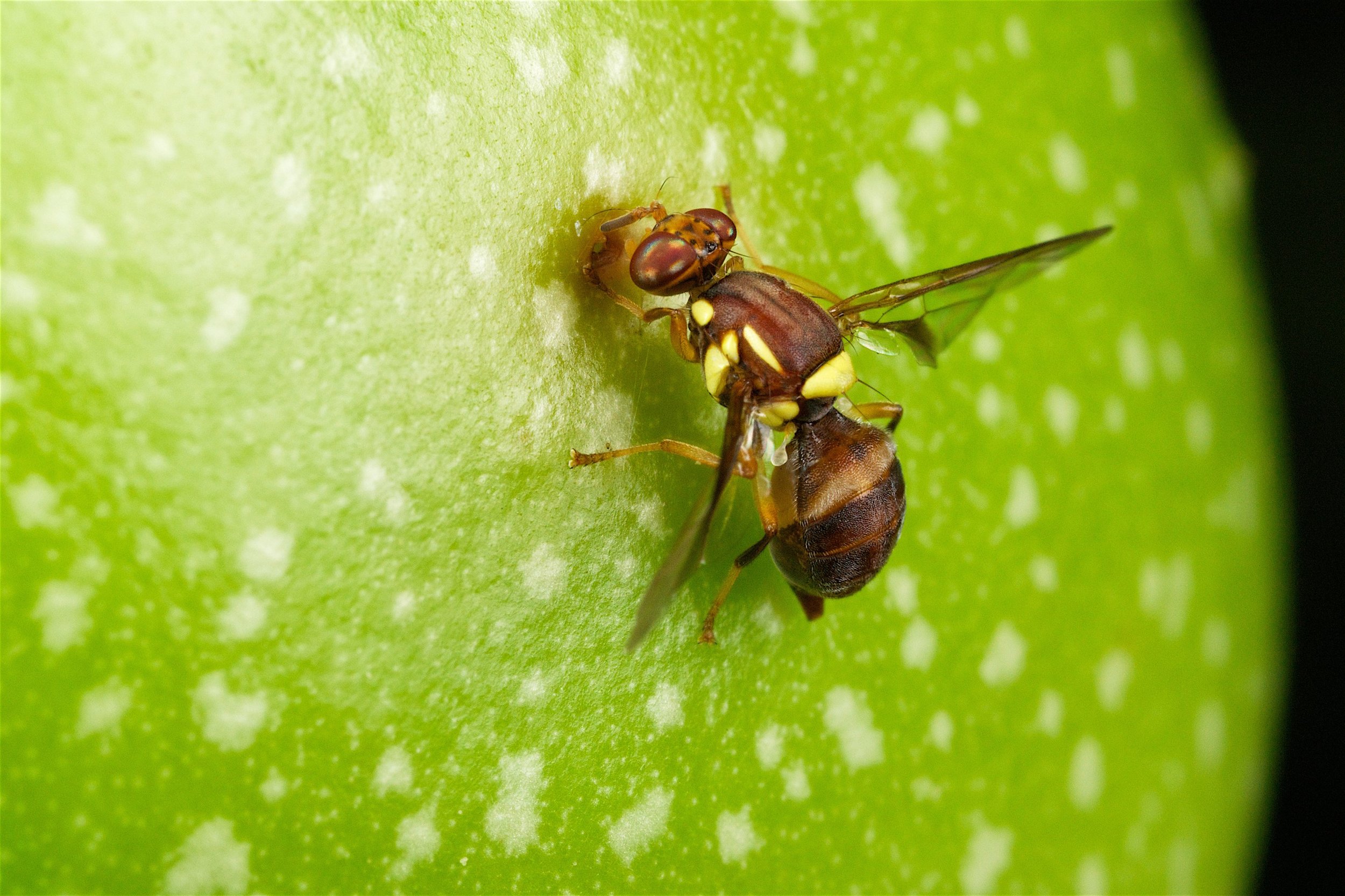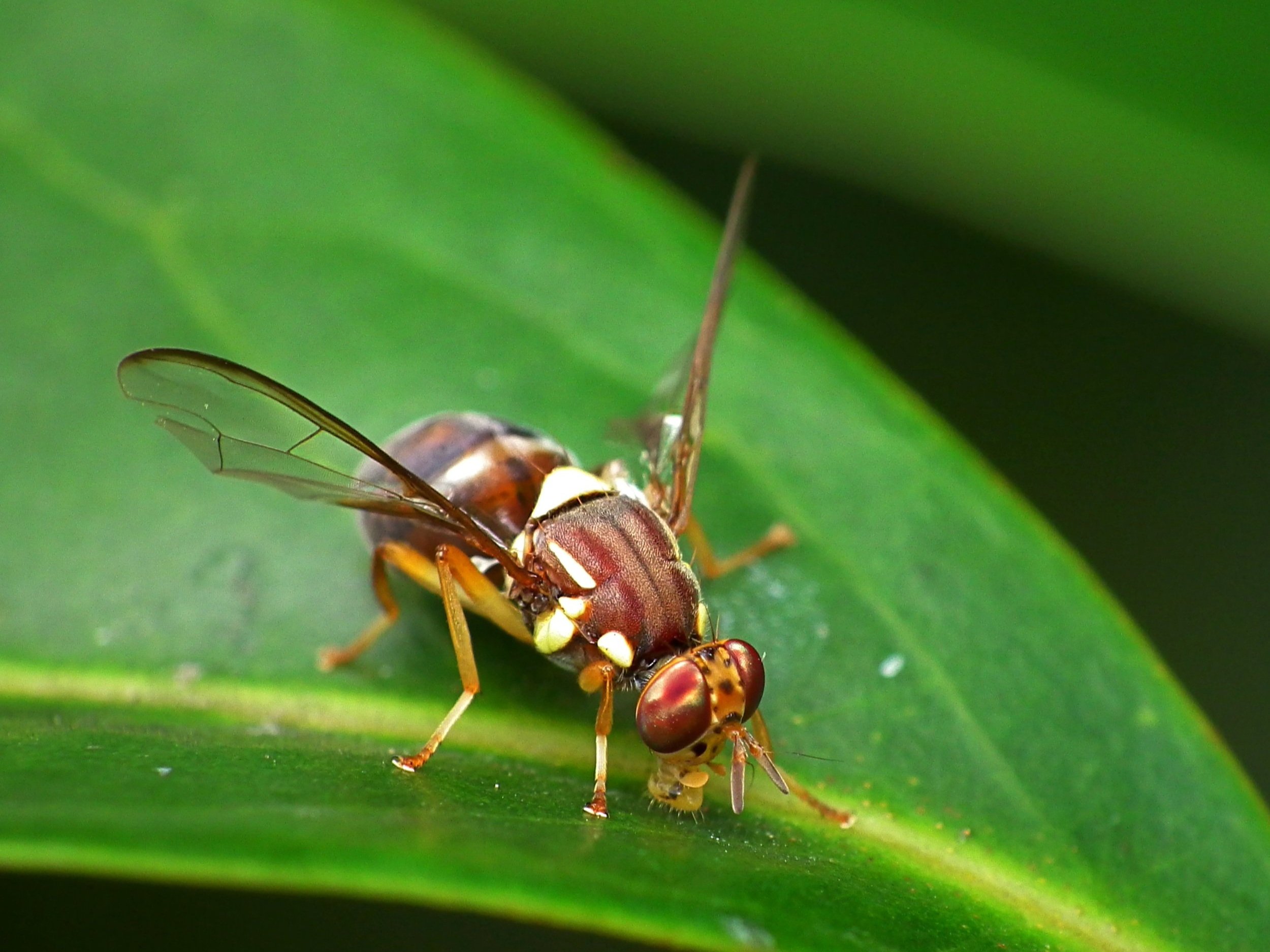
Queensland Fruit Fly
The Yarra Valley Queensland Fruit Fly Action Plan is designed to help protect local commercial and residential fruit production from the invasive Queensland Fruit Fly (QFF). Methods such as trapping, baiting, fruit hygiene, netting, and insecticides are used to control QFF, but the critical overarching factor for success is people working together to achieve Area Wide Management (AWM). The Action Plan’s Regional Coordinator role ensures industry, community and government cooperate to effectively achieve the Action Plan’s AWM goals.
Bronwyn Koll has been employed by Agribusiness Yarra Valley to work directly with the fruit fly Regional Governance Group, which includes representation from major horticultural producers, Local and State government, and community stakeholders. The regional activities are supported by Victoria’s Fruit Fly Strategy 2021 to 2025 Regional Grants Program that provides a coordinated and collaborative approach to fruit fly research and management across Victoria’s fruit production regions. The Fruit Fly Free Yarra Valley website is a fantastic resource.
Our Fruit Fly Management for fruit and vegetable growers manual is a comprehensive guide to the management and control of QFF.
What is Queensland Fruit Fly? & Why is it a pest of concern?
Queensland Fruit Fly (QFF) is an insect native to tropical forest in North-East Australia. It is one of Australia’s two ‘fruit fly economic pests of concern’.
QFF populations have migrated over time, and now threaten Victorian fruit production. QFF damage in fruit presents a risk to States and Countries that do not have QFF populations, therefore biosecurity protocols are required to safely trade and move fruit interstate or internationally.
QFF damages fruit and ‘fruiting’ vegetables
QFF injects her eggs into ripening fruit. Larvae grow, causing rot inside, making fruit inedible.
Agriculture Victoria have an extensive list of QFF host fruits.
Detect early and respond rapidly in the Yarra Valley
The Yarra Valley is working on the prevention of QFF and emergency responses to QFF detections.
The Agriculture Victoria funded program delivers;
A surveillance network to detect QFF as early as possible, reducing risk to the whole area, thus minimising the response resources needed;
Identification of suspect QFF and damaged fruit
Support to land managers to grow fruit responsibly, preventing QFF
Education programs and community workshops
You can help by installing a variety of QFF traps in your home or community garden or your commercial place of production. Regular weekly checks help your management decisions and are helpful to everyone near you. They complement the Area Wide Management surveillance program when the trap information is shared with the Regional Co-ordinator.
Detect early and respond rapidly in the Yarra Valley
If you have a suspect QFF detection, take a photo and keep a sample of the suspect fruit in a sealed container in the fridge. Send your image and description to
Text via phone 0490381999
Message our Regional Co-ordinator “Bron Koll” using Facebook Messenger or contact us via our Facebook page “Keep Yarra Valley Fruit Fly Free”
These other people and organisations may also be of help:
Nurseries and garden centres
Place of purchase (if you bought the fruit)
Local council
A local fruit grower if you know them
A community garden or neighbourhood house
Disposing of QFF infested fruit
Treating fruit damaged by QFF requires extreme heat or extreme cold over a period of time (dependant on the quantity of fruit) to kill eggs and larvae. Microwaving and bringing fruit to the boil in a pot is an effective treatment, as is freezing fruit in a bag until solid. Dispose of treated fruit into the rubbish bin just in case there are survivors!
Prevention of QFF
The best action against QFF in the Yarra Valley is to prevent the pest entering our region, our towns, roadsides, creek and parkland areas, and our fruit crops.
Don’t bring infested fruit into the Yarra Valley. Process fruit before coming to the Yarra Valley by cooking, preserving or freezing
If you find that you do have some fruit grown in a QFF area, process the fruit in your kitchen with a recommended treatment method handy and a rubbish bin ready to put treated bagged fruit into. Remember to also treat all the fruit scraps even if they don’t look QFF damaged, QFF eggs are hard to see.
Harvest and use ALL of the fruit you produce in a timely manner, preventing it falling to the ground. This prevents the QFF being attracted to your production area and stops any QFF eggs or larvae (if they are there) being able to pupate in the ground.
Remove unmanaged and feral “QFF host” plants on your property (such as blackberries, peaches, plums, apples & pears etc ) and either remove or reduce any domestic fruiting plants that you no longer need or can’t manage.
Keep suspect fruit fly damaged fruit and vegetables out of the compost system. They can fast track their lifecycle in the safety of the warmth & humidity of the compost bin.
Management of QFF
Growing fruit with the threat of QFF around requires the application of good pest management techniques such as:
The use of traps to monitor the QFF population to help make decisions.
Pruning fruit trees to keep them small, easy to reach for harvest and easy to net.
The early and regular application of fruit fly bait to reduce the QFF population.
Increased attention to collecting all of the fruit at harvest time, destroying fallen fruit, and checking fruit for QFF stings.
The use of insect mesh (netting) to protect the fruit from being attacked.
Potentially and as a last resort, the use of insecticide to kill the QFF in the target area (putting the desirable population of ‘good bugs’ at risk).
Insecticide use in bait and cover sprays requires the use of responsible application and timing techniques. Always read the label and adhere to the product instructions, only using it to manage the intended target pest.







